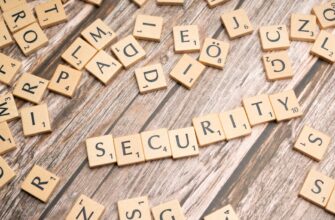- Why Anonymizing Your Accounts Is Crucial for Digital Safety
- Step 1: Audit Your Digital Footprint
- Step 2: Scrub Publicly Visible Personal Data
- Step 3: Fortify Authentication Protocols
- Step 4: Deploy Anonymization Tools
- Step 5: Maintain Ongoing Anonymity Hygiene
- Frequently Asked Questions (FAQs)
- Does anonymizing make accounts less functional?
- How often should I repeat these steps?
- Can hackers still find me if I anonymize?
- Are free VPNs safe for anonymization?
- Should I delete accounts or just anonymize them?
Why Anonymizing Your Accounts Is Crucial for Digital Safety
In today’s hyper-connected world, hackers constantly exploit personal data for identity theft, financial fraud, and cyberstalking. Anonymizing your accounts creates layers of obscurity that shield you from targeted attacks. By systematically reducing your digital footprint, you make it exponentially harder for malicious actors to trace, profile, or compromise your online presence. This step-by-step guide delivers actionable strategies to anonymize accounts across platforms while maintaining usability.
Step 1: Audit Your Digital Footprint
Begin by identifying where your personal data exists online:
- Search yourself: Google your name, email, and usernames to uncover exposed information
- Review social media: Facebook, LinkedIn, Instagram – scrutinize posts, tags, and profile details
- Check data brokers: Sites like Spokeo or Whitepages often sell personal data – request removal
- Examine old accounts: Delete unused profiles on forums, shopping sites, or abandoned platforms
Step 2: Scrub Publicly Visible Personal Data
Eliminate identifiers hackers use for targeting:
- Social media lockdown: Set all profiles to private; remove birthdates, locations, and workplace details
- Edit or delete old posts: Purge content revealing routines, relationships, or sensitive opinions
- Use pseudonyms: Replace real names with non-identifiable usernames where possible
- Disable metadata: Turn off location tagging in photos and posts across all apps
Step 3: Fortify Authentication Protocols
Secure entry points to prevent unauthorized access:
- Generate uncrackable passwords: Use 12+ character mixes of letters, numbers, and symbols (e.g., XK7$pQ!9#mR2)
- Enable 2FA everywhere: Prefer authenticator apps (Google/Microsoft Authenticator) over SMS verification
- Employ password managers: Tools like Bitwarden or KeePass create/store unique passwords securely
- Implement biometrics: Fingerprint or facial recognition adds physical-layer security
Step 4: Deploy Anonymization Tools
Leverage technology to mask your digital identity:
- VPN services: Choose no-log providers like ProtonVPN to encrypt traffic and hide IP addresses
- Privacy browsers: Use Tor or Brave with shields up to block trackers and fingerprinting
- Encrypted email: Switch to ProtonMail or Tutanota for end-to-end protected communication
- Virtual phone numbers: Apps like Google Voice create disposable numbers for sign-ups
Step 5: Maintain Ongoing Anonymity Hygiene
Sustained protection requires regular upkeep:
- Monthly privacy checkups: Review app permissions and social media settings
- Update software immediately: Patch OS, browsers, and antivirus to fix security flaws
- Monitor data breaches: Use HaveIBeenPwned to get alerts about compromised accounts
- Limit third-party access: Revoke permissions for unused apps in Google/Facebook settings
Frequently Asked Questions (FAQs)
Does anonymizing make accounts less functional?
Not significantly. While some personalized features may be limited, core functionality remains intact. The trade-off for enhanced security is minimal compared to hack risks.
How often should I repeat these steps?
Conduct full audits quarterly. Password updates and software patches should happen monthly. Immediate action is required after any suspected breach.
Can hackers still find me if I anonymize?
While determined attackers may use advanced techniques like correlation attacks, anonymization eliminates low-effort targeting, making you a far less attractive target.
Are free VPNs safe for anonymization?
Generally no. Free VPNs often log/sell data. Invest in reputable paid services with strict no-log policies and RAM-only servers.
Should I delete accounts or just anonymize them?
Delete unused accounts entirely. For active ones, anonymize first. Deletion should be the final step after removing all personal content.
By methodically implementing these steps, you transform your digital presence into a moving target for hackers. Remember: Anonymization isn’t about disappearing—it’s about intelligently controlling your visibility to outmaneuver threats in an increasingly hostile cyber landscape.







